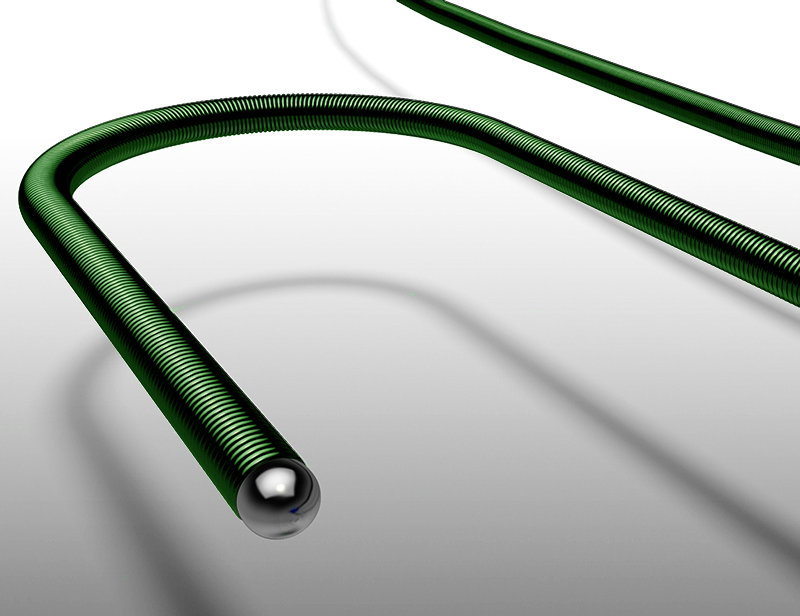Angiography guidewires are essential tools used in vascular medical procedures. They help doctors navigate through blood vessels to diagnose and treat various conditions. High-performance guidewires are important because they ensure precision and safety during these procedures. They allow healthcare professionals to reach targeted areas effectively, reducing the risk of complications. Demax is a trusted brand in the medical field, known for its reliable angiography guidewires. With a commitment to quality, Demax provides tools that medical practitioners depend on for successful interventions. Our guidewires are designed to meet the highest standards, supporting doctors in delivering excellent patient care.

Product Overview
Description of Demax High-Performance Angiography Guidewires
Demax high-performance angiography guidewires are top-quality tools used in medical procedures involving blood vessels. With their strong materials and careful design, Demax angiography guidewires are excellent tools for blood vessel interventions. They help healthcare professionals provide better care to their patients.
Key Features and Specifications
- Material Composition
Demax guidewires are made from high-quality materials like stainless steel and nitinol. These materials ensure the guidewires are strong and flexible. They can bend easily without breaking, which is crucial for navigating complex blood vessels.
- Diameter and Length Options
Demax offers guidewires in various diameters and lengths. This variety allows doctors to choose the right size for different procedures. The different sizes help in reaching various parts of the blood vessels effectively.
- Flexibility and Torque Control
The guidewires are designed to be flexible. This flexibility helps in maneuvering through tight and curved vessels. They also have good torque control, which means doctors can steer the guidewire accurately during procedures.
- Hydrophilic Coating
Some Demax guidewires come with a hydrophilic coating. This coating makes the guidewire surface slippery. It reduces friction, making it easier to move the guidewire through blood vessels. This feature improves the success rate of procedures and increases patient comfort.
- Types and Variants
Demax offers different types of guidewires to meet various medical needs. These include straight, angled, and tapered guidewires. Each type is designed for specific tasks, allowing doctors to choose the best tool for each procedure. The variety ensures that Demax can provide the right guidewire for any vascular intervention.
Key Benefits
Diameter
The diameter of angiography guidewires ranges from 0.018 inches to 0.038 inches and can be customized to meet specific clinical requirements. This variability allows healthcare professionals to select the appropriate diameter based on the target vessel size and procedural preferences.
Length
Angiography guidewires are available in lengths ranging from 45cm to 300cm, offering flexibility to navigate through various vascular anatomies. Customization options are available to tailor the length according to procedural needs and patient characteristics.
Curve Options
Angiography guidewires are available with curve options, including J3 and J6 curves, to facilitate navigation through tortuous vessels and challenging anatomical structures. These curve options enhance maneuverability and enable precise steering during vascular procedures.
Tip Design
Equipped with a tapered tip, angiography guidewires ensure seamless insertion into blood vessels while minimizing trauma to surrounding tissues. Additionally, some guidewires feature hydrophilic coatings to enhance lubricity and facilitate smooth navigation through tortuous vessels.

Applications
Diagnostic Angiography
Diagnostic angiography uses guidewires to place catheters in blood vessels. Doctors use them to see how blood flows and to find problems. Guidewires help detect issues like blocked arteries or aneurysms. They make the imaging process accurate and safe.
Percutaneous Coronary Interventions (PCI)
In PCI, guidewires help access the coronary arteries. They guide balloon catheters and stents into place. This restores blood flow in patients with coronary artery disease. Guidewires ensure that the devices reach the right spot effectively.
Peripheral Vascular Interventions
Guidewires are used to treat peripheral artery disease. They navigate through peripheral vessels to reach blocked areas. This aids in procedures like angioplasty, stenting, or atherectomy. These actions help remove blockages and improve blood flow.
Neurointerventions
In neurointerventions, guidewires assist in treating cerebrovascular diseases. They navigate cerebral arteries during procedures for stroke or intracranial aneurysms. Guidewires deliver therapeutic devices to the target site. This helps manage and treat serious brain conditions.
How to Use Demax High-Performance Angiography Guidewires
Step-by-Step Guide for Proper Usage
Using Demax angiography guidewires involves several clear steps. First, prepare the necessary equipment. Next, clean the insertion site. Then, insert the guidewire carefully into the blood vessel. Guide the wire through the vessel to the target area. Finally, position the guidewire correctly for the procedure.
Preparation Before Insertion
Before inserting the guidewire, gather all needed tools. Make sure the guidewire is sterile and undamaged. Clean the patient’s skin where the guidewire will enter. Use antiseptic to prevent infection. Check that all equipment is working properly. This preparation ensures a smooth and safe procedure.
Insertion Techniques and Catheter Navigation
Insert the guidewire gently into the blood vessel. Hold the guidewire firmly to maintain control. Move the guidewire slowly to avoid injury. Use imaging tools to see the guidewire’s path. Navigate the catheter along the guidewire to reach the desired location. These techniques help in accurately guiding the catheter.
Precautions to Take During the Procedure
Take several precautions to ensure safety. Monitor the patient’s vital signs throughout the procedure. Avoid forcing the guidewire to prevent vessel damage. Stay alert to any signs of complications. Use the guidewire smoothly to maintain control. These precautions help minimize risks during the procedure.
Post-Procedure Care and Guidewire Removal
After the procedure, carefully remove the guidewire. Apply pressure to the insertion site to stop any bleeding. Clean the area thoroughly to prevent infection. Monitor the patient for any adverse reactions. Proper removal and care ensure the patient’s safety and comfort after the procedure.
Advantages Over Competitors
Comparison with Other Angiography Guidewires in the Market
Demax guidewires stand out compared to others available. They offer better flexibility and durability. Many competitors use lower-grade materials that can kink or break easily. Demax guidewires maintain their shape and function under stress. This reliability makes them a preferred choice in medical settings.
Unique Selling Points of Demax Guidewires
Demax guidewires have unique features that set them apart. They have superior torque response, allowing precise control during procedures. The minimal friction design makes navigation through vessels smoother. Some models include hydrophilic coatings for easier movement. These features enhance the performance and ease of use, making Demax guidewires highly effective tools for healthcare professionals.
In Sum
Demax high-performance angiography guidewires are reliable tools for vascular medical procedures. They are made from strong materials like stainless steel and nitinol. These guidewires are flexible and durable, helping doctors perform precise interventions. They come in different sizes and types to meet various medical needs. Using Demax guidewires ensures safe and effective procedures, which improves patient care. Their advantages over other guidewires make them a top choice for healthcare professionals. Demax guidewires support successful medical outcomes in angiography and related treatments. Overall, Demax provides quality tools that help doctors deliver excellent care to their patients.